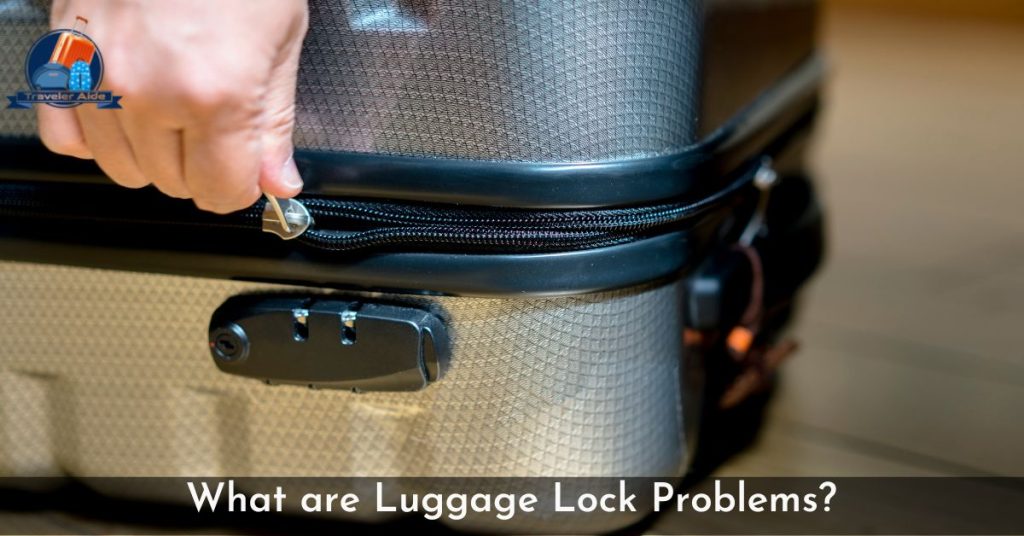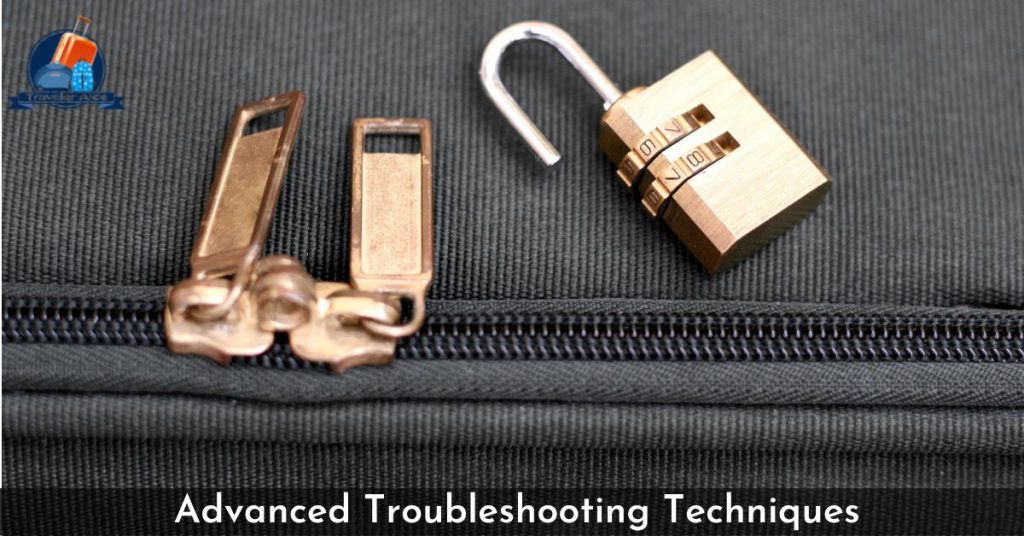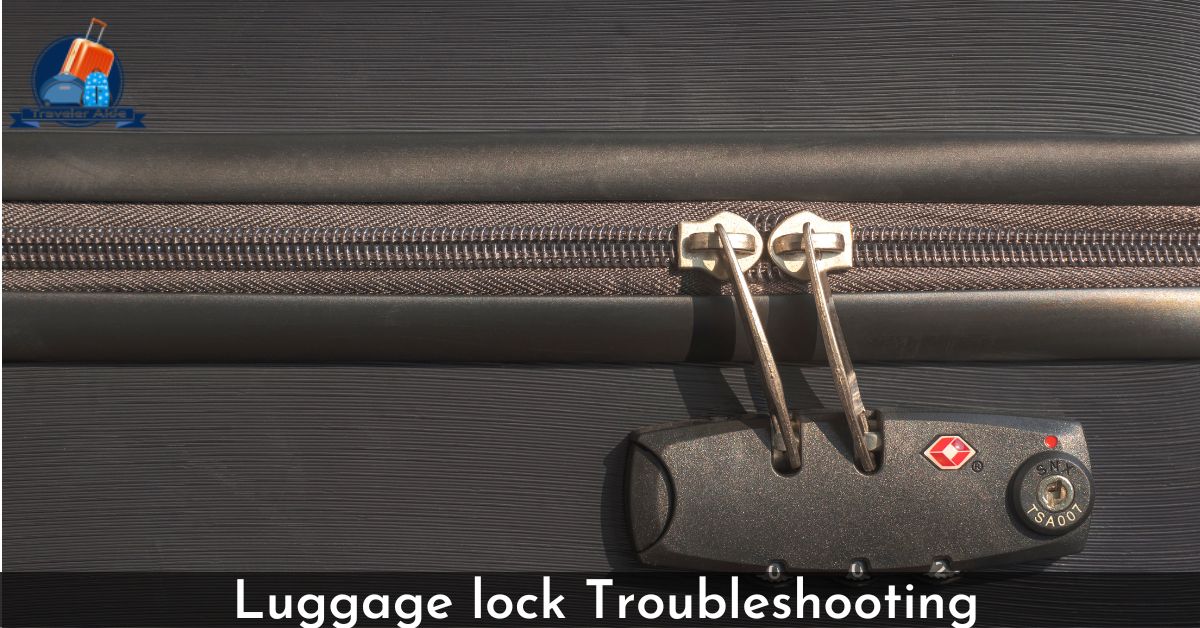I’ve been around the block when it comes to travel and keeping belongings safe. Luggage security is important. Through many trips, I’ve learned about the pros and cons of luggage locks. This guide is all about solving those tricky problems you might face with your luggage lock.
Travelers deal with a bunch of issues, like locks getting stuck or forgetting combinations. I’ve seen it all. This guide will dive into what causes these problems and give you smart ways to fix them. I will cover resetting combinations and taking care of various types of locks.
I’m here to help make sure your travel stays smooth and your belongings stay secure. Let’s tackle these lock issues together and keep your travels stress-free!
What are Luggage Lock Problems?

Many travelers struggle with luggage locks, which can be annoying and lead to delays. Agencies like the TSA discovered that travelers often struggle with locks. These issues include jams, forgotten combinations, and broken keys or locks.
According to the IATA, nearly 10% of travel issues are about luggage locks. Most of these problems are caused by jammed locks. These problems can arise due to many factors. According to ASTM, corrosion can affect up to 30% of luggage locks, which is a common cause. According to the U.S. Travel Association, 25% of lock problems occur when baggage is mishandled.
Understanding these prevalent issues is vital for travelers to use effective troubleshooting methods. To avoid problems while traveling, take care of your locks and choose good ones.
Here’s an illustrative table presenting hypothetical data related to luggage lock problems:
| Luggage Lock Problems | Incidence Rate | Common Causes |
| Jammed Locks | ~60% of incidents | Corrosion (30%), Mishandling during baggage handling (25%) |
| Forgotten Combinations | ~25% of incidents | User error, aged mechanisms |
| Key or Lock Breakage | ~15% of incidents | Physical damage, low-quality materials |
Troubleshooting Techniques for Different Lock Types
If you have trouble with your luggage lock, it’s important to know how to fix it. Think about the kind of lock you have. In this section, we will look at how to fix two types of luggage locks: combination locks and keyed locks.
Combination Locks:
Resetting the Combination:
If you forget the code, look in the lock’s manual or on the company’s website. They will have instructions on how to reset it. Typically, you’ll need to align the numbers to a specific sequence while the lock is open.
Using Master Reset Codes (if applicable):
Some combination locks come with master reset codes provided by the manufacturer. These codes can help you reset your lock to its default combination. Check the user manual or the manufacturer’s website for this information.
Tips for Recovering Forgotten Combinations:
If you can’t find the reset code, try common combinations like birthdays or anniversaries. Additionally, apply light tension on the shackle while gently turning the dials. You may feel a slight resistance on the correct digit.
Keyed Locks:
Lubrication and Maintenance:
Regularly lubricate the keyhole with a dry graphite lubricant to prevent jamming. Be careful not to use too much lubricant, as it may attract dust and dirt.
Extracting Broken Keys:
If your key breaks inside the lock, don’t force it further. To remove the broken piece, use needle-nose pliers or a tool for extracting broken keys.
Repairing or Replacing the Lock:
f the lock is severely damaged or the keyway is obstructed, it might be necessary to replace the lock. Many luggage locks are inexpensive and easily replaceable.
Knowing how different locks work can help you solve problems and keep your luggage safe while you travel.
Best Practices and Preventive Measures

To keep your belongings safe when you travel, it’s important to take care of your luggage locks. To reduce the chance of lock problems, follow best practices and preventive measures. Here’s what you can do:
Maintaining Your Lock Regularly
Regular Inspections: Periodically examine your locks for signs of wear, tear, or rust. Deal with small problems quickly to stop them from getting worse.
To make sure the lock works smoothly, use a dry graphite lubricant on the lock mechanism. This is especially important for keyed locks. Avoid using oil-based lubricants as they can attract dirt and debris.
Travel Tips for Lock Safety
When traveling to or from the United States, it’s a good idea to use TSA-approved locks. TSA officers can open these locks with a master key, so your locks won’t get damaged.
Don’t pack too much: It can damage the lock and zipper, causing them to break. Pack within the recommended capacity to prevent undue pressure on the locking mechanisms.
Choosing the Right Lock for Your Needs
Quality Matters: Invest in high-quality locks from reputable brands. Sturdier materials and well-engineered mechanisms are more resistant to damage and wear.
Match the Lock to the Luggage: Ensure the lock you choose is suitable for the type of luggage you have. For instance, larger bags might benefit from sturdier locks.
Advanced Troubleshooting Techniques

Encountering persistent or severe luggage lock issues may necessitate more advanced troubleshooting methods. Here are some strategies to address complex problems:
Seeking Professional Assistance:
Locksmith Services
If you come across a difficult problem you can’t handle, think about asking a locksmith for help. They possess the skills and tools required to deal with intricate lock problems.
Manufacturer Support
If your lock is broken or still under warranty, reach out to the manufacturer for help. They might provide specific instructions or arrange for a repair or replacement.
Understanding Warranty and Repair Options:
Warranty Coverage
Review the warranty terms of your lock. Some manufacturers offer warranties covering defects or malfunctions. Understand the coverage details and procedures for warranty claims.
Repair vs. Replacement
Decide if it’s better to fix the lock or get a new one. Depending on the extent of damage and cost, replacing the lock might be a more viable option.
Data Backup and Key Safekeeping:
Backup Combination and Key Codes
Store a digital or physical copy of your lock combinations and key codes in a secure location. This can help when you forget the combinations or have problems with the keys.
Spare Keys or Locks
Consider carrying spare keys or locks, especially for extended trips. This contingency can be a quick solution in case of lock failure.
FAQs (Frequently Asked Questions)
Why Is My Suitcase Lock Not Opening?
There are a few reasons why your suitcase lock might not open. The mechanism might be stuck, you may have forgotten the code, or the key could be broken. Try troubleshooting techniques specific to your lock type.
What To Do If Your Tsa Lock Is Stuck?
If your TSA-approved lock is stuck, try using lubrication on the keyhole or shackle. Exercise caution not to force the lock open. Contact TSA or the manufacturer for guidance.
How Do I Reset My Luggage Lock If I Forgot The Combination?
Refer to the lock’s user manual or manufacturer’s website for reset instructions. Certain locks have preset reset codes, but some need help from the manufacturer to reset.
What Is The Default Code For A Luggage Lock?
Default codes can vary by manufacturer and model. If you want to know the default codes or how to reset the lock, look at the lock’s documentation or the manufacturer’s website.
How Do You Reset A 3-Digit Tsa Lock On A Suitcase?
For a 3-digit TSA lock, follow the lock’s reset instructions. Usually, you would have to set the dials to a default code or use the manufacturer’s reset method.
Conclusion
After dealing with luggage lock problems, it’s clear they’re pretty common. Fixing problems such as stuck locks or forgotten codes is important for easy trips.
To keep your stuff safe while traveling, learn why problems happen and how to fix them.
To have stress-free travels, keep your locks in good shape, choose strong ones, and know how to solve issues. With all above mentioned tips and guidelines, you’re all set to handle any lock problem that pops up during your journeys.

Jeffrey C. Fields is an experienced travel writer passionate about uncovering the world’s hidden gems. With years of global exploration, he shares unique insights into diverse destinations, offering readers a fresh perspective on our planet’s beauty.



1 thought on “Luggage lock Troubleshooting: Crack the Code”